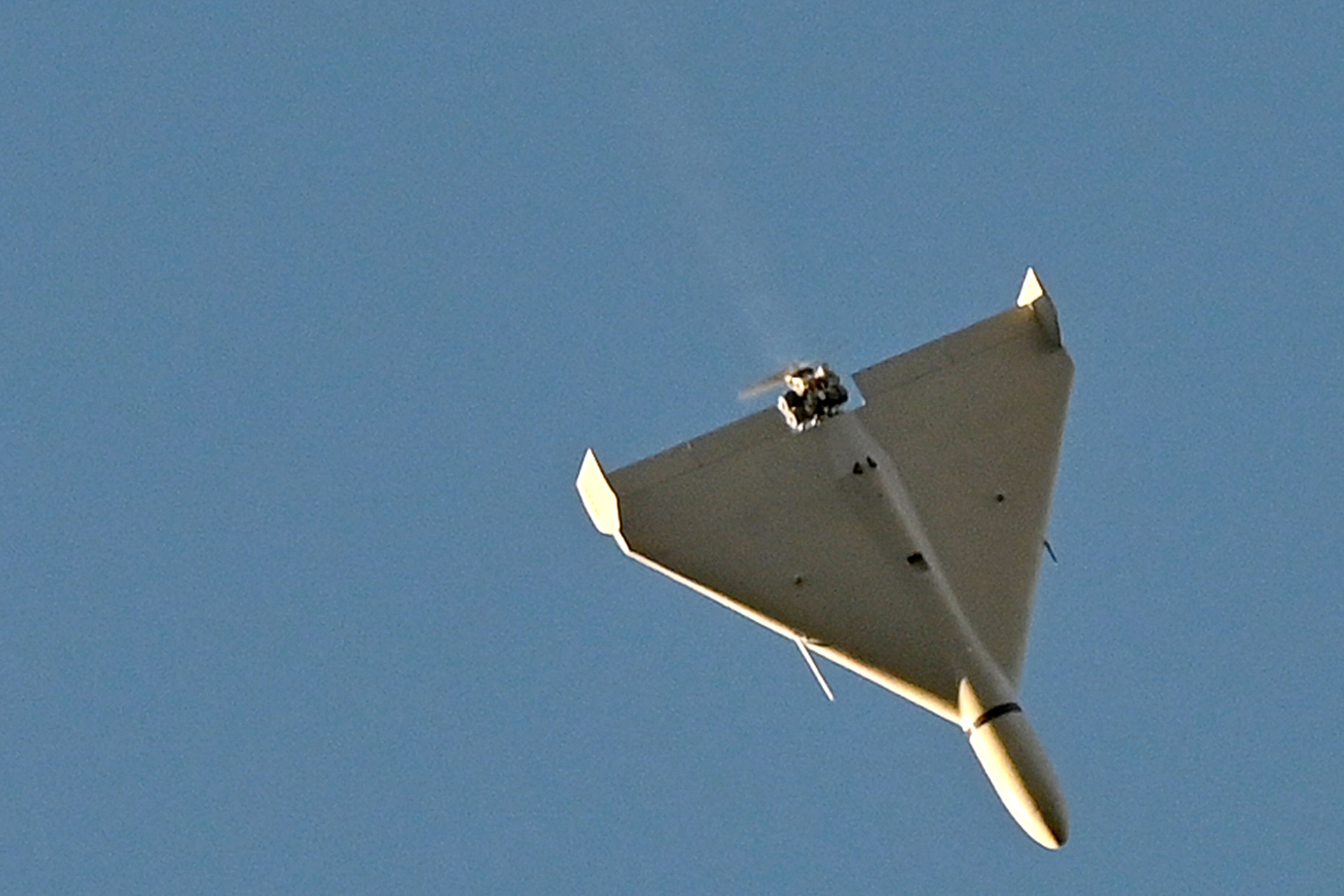Unlike drones that return to their base as soon as they launch their destructive missiles, suicide drones or "kamikaze" collide with their target and explode in it.
A new wave of deadly Russian airstrikes using these drones on Ukraine has killed more than 25 people and injured more than 100, according to authorities in Kiev, in the deadliest attacks since the early days of the war.
The current attacks, which began on October 10, have targeted at least <> districts across the country and used Russian missiles and Iranian-made drones, according to Ukrainian authorities.
On Monday, squadrons of unmanned aircraft loaded with explosives — called kamikaze — targeted Kiev, killing at least 4 people, as well as launching attacks on energy facilities, and the Ukrainian Air Force says it destroyed at least 37 drones during these attacks.
Officials in Tehran have denied supplying arms to Russia.
Whoever supplies these drones to Russia, here are 3 questions that explain what they are, their role in the war, and the extent of their impact:
First: Why are they called kamikaze drones?
Unlike drones that return to their bases as soon as their payload of missiles is launched, kamikaze or suicide drones are destroyed in attack.
Alex Gatopoulos, a defense analyst for Al Jazeera, says the munitions can hover over an area to identify the target before pounce on it to destroy it.
These drones, just like cruise missiles, can hit targets hundreds of kilometers away, but cruise missiles are expensive while kamikaze drones are a cheaper alternative that is accurate and accurate, according to Gatopoulos.
Ukrainian President Volodymyr Zelensky says Russia has bought 2400,<> kamikaze drones, but its fleet is rapidly depleting.
Second: Where did these planes come from?
Ukraine says Russia imported from Iran the drones, which in Persian are called "Shahed-136," which can be translated as "witness to faith," but the word can also mean "martyr."
Mykhailo Podolak, an adviser to the Ukrainian president, accused Tehran of being responsible for the "murders of Ukrainians," and the Kremlin did not comment.
But Iran, which sees the real cause of the war as NATO's deployment of troops in Eastern Europe, has denied supplying weapons to Russia.
Gattopoulos says the drones are unlikely to be Russian-made because Moscow "has been late in developing low-cost tactical drones, especially armed ones."
Samir Puri, an analyst at King's College London, told Al Jazeera that some form of agreement to sell the planes may have been made between Moscow and Tehran.
These drones "were purchased off Iranian shelves, transported to the war zone and used, I think, to a large extent, as a weapon that will continue to overwhelm Ukraine's air defenses by adding another dimension in this hybrid warfare," Puri said.
Third, will these planes change the course of the war in Ukraine?
Kamikaze drones cost about $20,<>, according to Puri, "which is actually a very large amount, when you consider that it is a single-use weapon."
A spokesman for the Ukrainian Air Force told The Associated Press that the use of swarms of these aircraft is a challenge to Ukrainian air defenses, but Western countries have promised to strengthen Kiev's defenses with systems that can shoot down drones, but many of these weapons have not yet arrived, and in some cases, it may take months.
The deployment of drones is indeed a new challenge for Ukrainians, but it is unlikely to be a game-changer.

